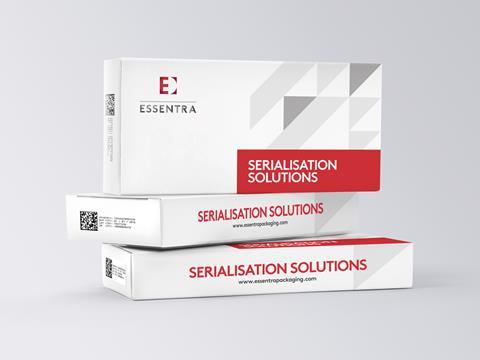
Data released by the United States Food and Drug Administration (USFDA) states that approximately 10% of all pharmaceuticals sold globally are counterfeit. Whilst counterfeiters are active around the world, not all markets suffer equally. Developed nations have the lowest amount of counterfeit pharmaceutical goods with an estimated 1% penetration rate in Europe and the USA, whilst developing nations show particularly severe penetration rates. For example, it is estimated that up to 30% of all medicines in Africa and the Far East are fake. These figures continue to grow due to increasingly complex supply chains, the increased sophistication of counterfeiters, a lack of enforcement capacity, and the expansion of e-commerce. It is widely believed that up to 50% of drugs available online are fake - with estimates reaching up to 70% in some African and Eastern European countries – writes Rupert Taylor, Global Category Manager – Healthcare & Personal Care, Essentra.
In response to this continued threat, governments and pharmaceutical companies around the world are increasing their efforts to develop ways to reliably track and trace prescription drugs. Serialisation is the system of tracking, tracing and verifying products via unique identification codes. These unique identifiers reveal a complete history of the drug; from the supplier to consumer, for the whole duration of the drug’s life in the market and additional time necessary for returning and disposing of the pack after it has expired. The code will convey key data elements about the drug contained in the box, such as the drug’s product code, national reimbursement and identification number, batch number and expiry date of the unique identifier.
The advantages of drug serialisation are widely accepted in the pharmaceutical industry, but the importance of mandatory serialisation has been underappreciated. Serialisation confirms the integrity of the medicine. A serial code reveals key information about the drug, such as its name, quantity, expiration date and the details of every transaction in the manufacturing process. Authentication of pharmaceutical drugs is of critical importance, as counterfeiting poses a high level of risk to the industry and to the consumer. This is why packaging companies such as Essentra have developed technologies to integrate security within the product packaging, supporting the industry’s needs by supplying both serialisation and tamper evident features.
Serialisation ultimately aims to protect patients. In order for serialisation to truly serve its purpose, a uniform system must be put in place that meets the requirements at each level of the supply chain. The system will bring together chemists, manufacturers, packaging companies and finally, the pharmacies, but there still remain a number of challenges that need to be overcome.
Firstly, the creation of a complex structure for serial codes is cost intensive, and the more additional elements that are included in a number, the more difficult standardisation will be across all companies in the supply chain. Packaging and IT companies will have to absorb the increase in costs into their own supply chains, which may result in affecting the availability of drugs for patients and consumers.
There are also several technological and infrastructure challenges to be considered with the implementation of a uniform allocation of serial numbers. Procedures must accommodate the manufacture and distribution, but also the return, rework and other additional loopholes. In addition, introducing a new system will require existing suppliers and companies to integrate new procedures into IT systems, databases and business structures. Packaging suppliers and pharmaceutical companies must be agile and able to manage different serial numbers in different formats.

The introduction of serialisation initiatives into legislation by governments arguably poses the greatest challenge. Despite the fact that significant laws did come into effect as early as 2006, there are still many unanswered questions regarding serialisation, such as whether existing national law will need to be changed, if serialisation is required by all countries and if there needs to be a global standard. At present, there are significant loopholes in the system – as can be seen by the supporting infographic – with different governments enforcing different legislation. Not only do the details of their legislation differ but also, under some national laws, serialisation does not apply to all medicines and drugs. Across the board, different governments must adopt a common legislation which will require heavy investments from the countries to ensure the new system succeeds.
Another consideration that must be raised in the face of this regulatory uncertainty is the importance of establishing long-term relationships with strong partners who are able to help manage costs and minimise risks. These partners must be well-informed around the current regulatory requirements to ensure required functionality is incorporated in to the solution, and so that the partner can be a valuable contributor in long term strategic initiatives. Flexibility will be invaluable as partners incorporate new features as technology and requirements evolve.
Much of the complexity in creating and managing serialisation programs stems from the complexity of the pharmaceutical supply chain itself. Prescription drugs are sent to every corner of the world – they are produced, distributed, repacked and sold by hundreds of thousands of organisations working together to provide patients with the drugs that they need. Serialisation must adhere to a wide variety of legislative needs – differing from one country to the next – creating complexity in systems, technology and infrastructure. However, it is important to note that serialisation alone is not sufficient. The optimal approach to protect against counterfeiting will include several layers of security, combining both track and trace systems and tamper verification solutions. With multiple security features, pharmaceuticals will be able to make it as difficult as possible for counterfeiters and the illicit trade to succeed going forward.




















